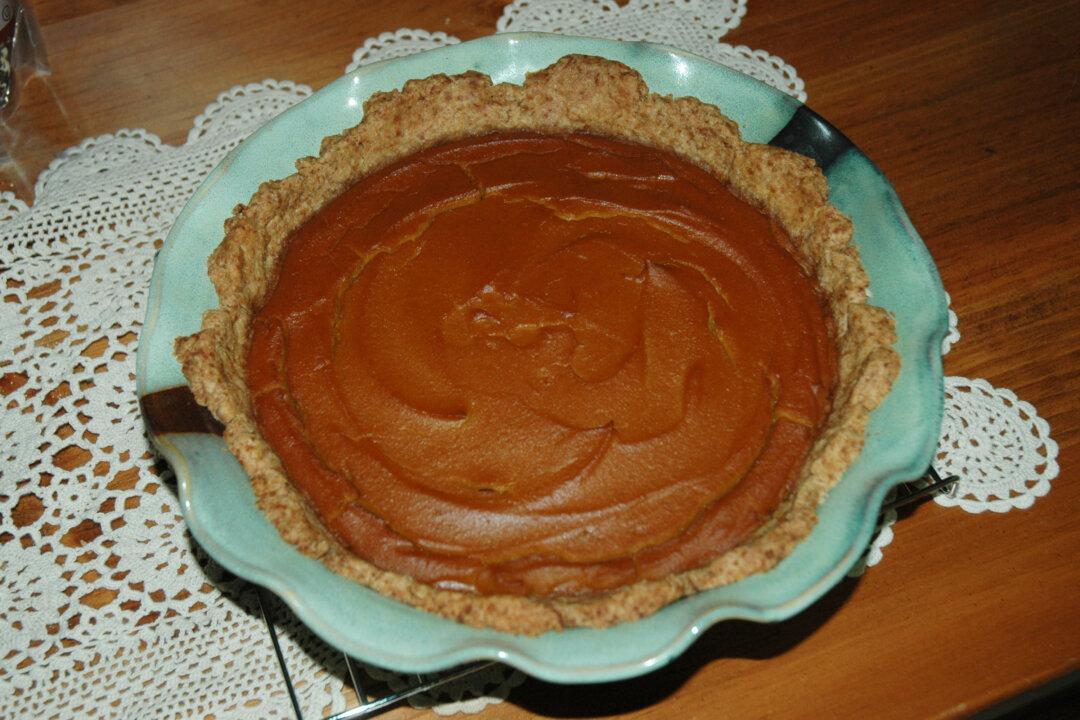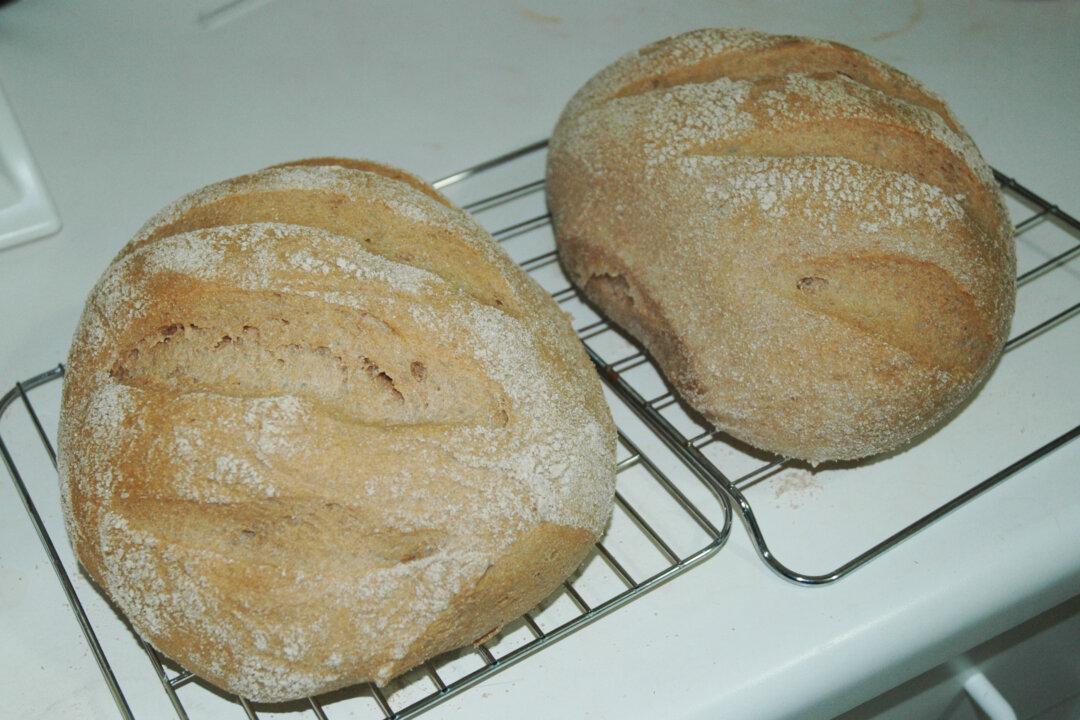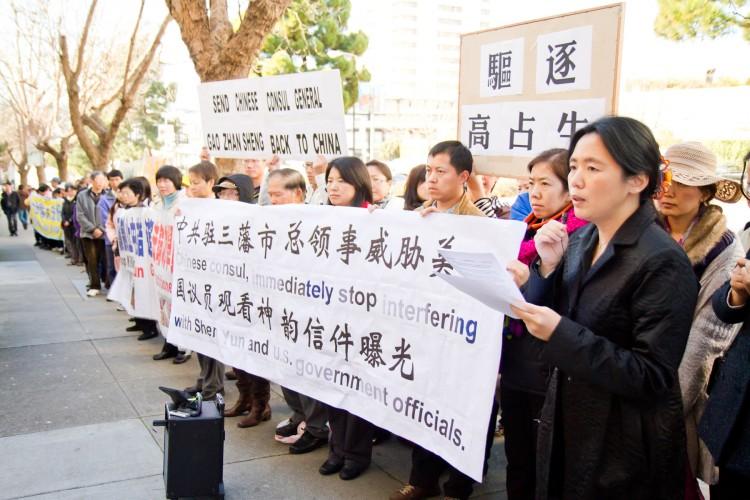Ingredients
1 1/3 cups cooked pumpkin (550g)
1/2 cup creamed coconut, loosely packed (55g), or 1/2 cup shredded coconut (55g)
1/2 cup almond milk (110g)
1 tablespoon cornstarch
3/4 cup palm sugar (90g)
1 teaspoon cinnamon
1/4 teaspoon ginger
1/2 teaspoon salt
Choosing a Pumpkin
The type of squash you choose makes a difference for this recipe. Canned pumpkin did not do well in my taste tests; nor did “savory” squashes such as Acorn and Delicata, all of which tasted rather bland. Butternut was good, but not quite as flavorful as some sweet pie pumpkins (which also vary in flavor) or green or red Kabocha. There are many varieties—anything that vaguely resembles a pumpkin is worth a try. I tried a gray Kabocha once, and it was very dense and chalky. Perhaps it wasn’t ripe enough. Whatever the reason, it’s the only squash I’ve tried that ruined a pie because of its mealy texture.
Preparing the Pumpkin
To cook the pumpkin, you can steam it on the stove or roast it in the oven until rather soft when poked with a fork. I also like to use a pressure cooker, which I did for this pie. Cook under pressure for 5–7 minutes, depending on thickness and density of the flesh, then let the steam release naturally. The flesh should scrape easily from the skin with a spoon.
Store any extra pumpkin in the fridge and use within four days, or divide it into single-pie portions and freeze.
The seeds can be washed and spread on a plate to dry, turning occasionally. They’re great to munch on raw, with a bit of salt or spices if you wish.
Making the Filling
Weigh or measure the creamed coconut (or shredded coconut) and almond milk into a blender. Blend immediately until smooth, or until it stops turning over.
Scrape the sides of the blender, then add enough of the pumpkin to allow it to turn over smoothly. Blend until smooth. Pumpkins vary in moisture content. If the mixture is too dry to turn over, add a little vegan milk.
Add the cornstarch and blend on low.
If a smooth texture is desired, add the remaining pumpkin and the remaining ingredients and blend together. Alternatively, you can scrape the mixture into a bowl and stir in the remaining ingredients, including the rest of the pumpkin, with a wire whisk. Recently, I cooked up a tan-colored “Cinderella” pumpkin big enough to make 4 1/2 pies. Its flesh was stringy and bright orange. I left one third of the pumpkin unblendered to give that rustic, “homemade” texture that you cannot get in a can. Delicious!
Smooth the filling into a crust.
Cooking the Pie
Cook at 425 F for 15 minutes to set the crust, then turn the oven down to 350 F for about 40–45 minutes. Use a crust shield or aluminum foil around the edge to prevent it from over-browning. To cook two pies at once, add 5 minutes to the 425 cook time, and perhaps another 10 minutes at the end.
The pie is done when the cornstarch in the center has been fully cooked. The center should not be a lighter color or seem very different from the rest of the filling. If you’re not sure, cook it a bit longer.
If the pie seems too soft, especially after being refrigerated overnight, it may have been undercooked or have too much liquid. Even when it is piping hot, if you remove a piece, the pie should only slouch a little at the cut, if at all. The cornstarch or coconut can also be increased if a firmer pie is desired. The pie pictured was actually made before final adjustments were made to the recipe, and is a bit on the wet side.
Different types of pumpkin and different cooking methods can cause the pumpkin to retain more or less water. If the pumpkin is spongy and holding too much water, let it drain in a colander before weighing. The almond milk can also be adjusted accordingly. The filling will seem quite thick.
The Coconut
The coconut cream gives a creamier final texture than the shreds. I don’t mind the few tiny bits of coconut shreds that remain after blending, so I often make it that way because the shreds are a bit easier to work with. Be sure to blend right away after adding the milk—don’t let the coconut soak because that makes it rubbery and resistant to blending.
If the coconut cream has separated in the jar, you can dig out the oil and set it aside to get to the solids, then add a little of the oil back into the blender with the solids. The 1/2-cup measurement for both the cream or shreds should be rounded a bit. It’s best to weigh it if you have a kitchen scale.
Other Sweeteners
Nearly any kind of sweetener should work in this recipe. Since there are no eggs in the filling, you can taste-test the sweetness before you cook it. I have also successfully combined multiple sweeteners such as stevia, palm sugar, and xylitol. If a liquid sweetener such as maple syrup is used, be sure to subtract an equal amount of milk, and use the syrup to help blend the coconut.
Quick and Easy Vegan Crust
1 1/2 cups flour (176g)
1/2 teaspoon salt
2 tablespoons palm sugar
1/2 teaspoon baking powder
1/3 cup vegetable oil (60g)
1/4 cup cold water (55g)
Stir the dry ingredients together in a bowl.
If you have a kitchen scale, you can weigh the oil straight into the dry ingredients (to save washing a cup), then pour the water in last. (If you use a wet sugar such as maple syrup, reduce the water by the same amount.)
Stir with a fork until the flour is barely moistened. Overworking the dough will make the crust tough.
Press the dough into the pie plate, again without overworking it. If you prefer, you can roll it out in the traditional manner.
Fill and bake.
Tips
Begin pressing the dough into the plate by flattening the majority of it against the sides. Then press around the inside corner of the plate, and after that, the bottom. If you start with the bottom, it’s easy to end up with a too-thick bottom and too-scant sides.
If the bottom crust is too thick in places, it’s best not to try to work it up the sides—just pluck out some dough from the thick areas and smooth the hole over.
You can use white flour, whole wheat flour, or a combination. White flour results in a more tender crust. The pie shown uses just whole wheat.
Note: the flour is measured in the traditional way—not packed or shaken. If you measure your flour by shaking it until the top is even, it should measure only 1 1/3 cups. You can also add more water if the dough seems dry, or more flour if it’s wet.




